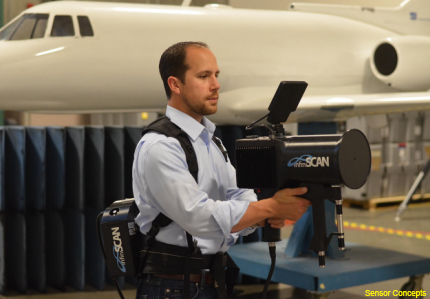Handheld imaging tool makes light work of aircraft inspections
AFRL's HIT improves the quality of images while taking equipment weight from 1,200 pounds to 18 pounds.

An operator demonstrates the handheld imaging tool.
Inspecting aircraft for flight-worthiness, especially when deployed in the field, just got a lot easier for the Air Force.
Making sure an aircraft is safe to fly is essential, of course, but until now part of the inspection process involved a large, 1,200-pound piece of equipment for checking the aircraft’s out surface. That equipment had some logistical requirements that could make inspections a challenge in deployed locations.
The Air Force Research Laboratory has lightened that load, developing a first-of-its-kind handheld imaging tool that can image 100 percent of an aircraft, according to and AFRL release. The tool, known as HIT, weighs less than 7 pounds and connects to an 11-pound backpack.
Not only is the HIT roughly 67 times lighter than the old equipment, it does the job better, collecting more data of equal or better quality and in less time, AFRL said. In one zone configuration, for instance, the HIT can image an entire zone in 15 minutes with one operator. With the existing equipment, it would take two operators about three hours to do the same thing.
The HIT was developed over five years under a Small Business Innovation Research (SBIR) contract managed as an Advanced Technology Demonstration Program. AFRL initially gave California-based Sensor Concepts a $6.17 million contract in 2009 for developing the tool. In September 2014, AFRL awarded the company a $9.7 million contract for hardening and a limited-production run of HIT, eventually to ramp up to a full production run. The hardening was to meet military requirements for field and depot use and to comply with other support equipment requirements.
The tool was successfully tested in December during a demonstration at Eglin Air Force Base, Fla.
In the AFRL release, Joel Greenleaf, senior logistics subject matter expert for the F-35 Lightning II, said the HIT is the most successful SBIR project he’s worked on in 24 years.